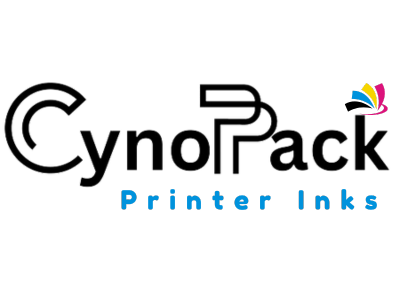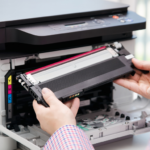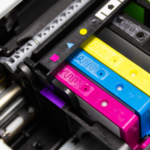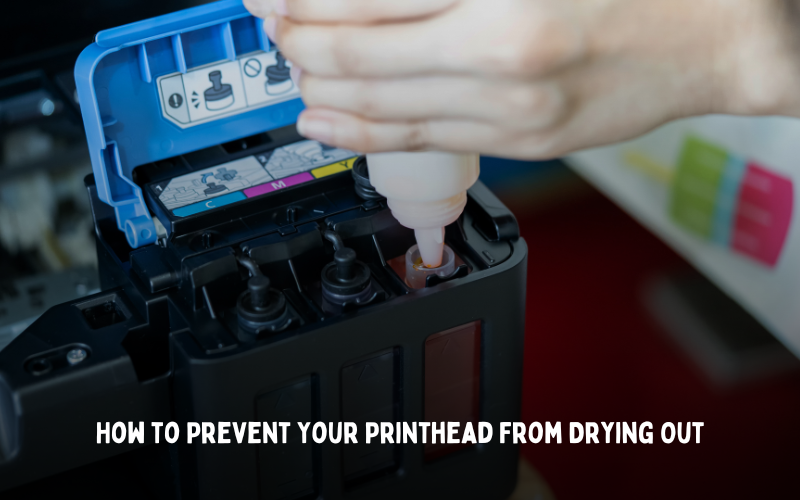Printheads are the crucial component of your printer, responsible for delivering precise ink or toner to create sharp and vibrant images. However, a common issue many printer users encounter is the drying out of the printhead, which can lead to poor print quality, clogged nozzles, and potentially expensive repairs. In this article, we will explore effective strategies to prevent your printhead from drying out, thereby extending the life of your printer and ensuring smooth, uninterrupted printing.
Understanding the Importance of a Healthy Printhead
The printhead is the heart of your printer, controlling the precise flow of ink or toner onto the paper. Keeping the printhead in good condition is vital because a dried-out printhead can result in:
- Clogged Nozzles: Dried ink or toner can block the tiny nozzles, causing streaks, faded colors, or incomplete prints.
- Decreased Print Quality: Uneven ink distribution due to a dry printhead can diminish the sharpness and clarity of your prints.
- Increased Costs: Cleaning cycles to clear a dried-out printhead consume additional ink or toner, and in severe cases, the printhead may need to be replaced, leading to higher costs.
Taking proactive measures to keep your printhead functioning properly is key to avoiding these issues.
1. Regular Printing: The Key to Preventing Dry Printheads
One of the simplest and most effective ways to prevent your printhead from drying out is to use your printer regularly.
Print Often to Keep Ink Flowing
- Routine Usage: Regular printing, even if it’s just a small document or test page, keeps the ink or toner moving through the printhead. This prevents the ink from sitting idle and drying out.
- Ideal Frequency: Aim to print something at least once a week. If your printer has been idle for a longer period, consider printing a color test page to ensure all colors are flowing properly.
Use Scheduled Maintenance Prints
- Automated Printing: Some printers come with maintenance features that allow you to schedule automatic test prints. This feature is particularly useful for maintaining the health of your printhead, especially if you tend to forget to print regularly.
For more tips on maintaining your printer, check out our guide on Essential Printer Maintenance.
2. Proper Storage of Ink Cartridges and Toners
How you store your printer’s consumables, such as ink cartridges and toners, can significantly impact the longevity of your printhead.
Store Cartridges Correctly
- Cool, Dark Place: Store ink cartridges in a cool, dark place to prevent them from drying out or being exposed to heat, which can cause the ink to thicken or evaporate.
- Sealed Packaging: Always keep unused cartridges in their original sealed packaging until you are ready to use them. This helps maintain their freshness and prevents drying.
Replace Cartridges Promptly
- Avoid Empty Cartridges: Running your printer with a nearly empty cartridge can cause the printhead to overheat, leading to drying and damage. Replace cartridges promptly when the ink level is low to ensure the printhead remains lubricated.
Looking for high-quality compatible ink cartridges? Visit our Epson Inks Shop for reliable and affordable options.
3. Printer Settings and Features That Protect Your Printhead
Modern printers come equipped with various settings and features designed to maintain the health of your printhead. Utilizing these options can significantly reduce the risk of drying out.
Utilize Power Management Features
- Automatic Shutdown: Some printers have power management features that automatically shut down the printer after a period of inactivity. This conserves energy and ensures that the printhead returns to its home position, where it is protected from air exposure.
- Sleep Mode: If your printer has a sleep mode, use it instead of turning the printer off completely. This mode keeps the printhead slightly warmed and the ink fluid, reducing the risk of drying.
Enable Self-Cleaning Cycles
- Scheduled Cleanings: Many printers offer self-cleaning cycles that keep the printhead in good condition by periodically flushing the nozzles with ink. While this consumes a small amount of ink, it is an effective way to prevent clogs and maintain print quality.
- Manual Cleaning: If your printer doesn’t have an automatic cleaning feature, you can manually run a cleaning cycle from the printer’s settings menu. This should be done periodically, especially if you notice any print quality issues.
4. Environmental Considerations: Temperature and Humidity
Environmental factors, such as temperature and humidity, play a significant role in preventing your printhead from drying out.
Control the Climate Around Your Printer
- Optimal Temperature: Keep your printer in a room with a stable temperature, ideally between 60°F and 75°F (15°C to 24°C). Extreme temperatures can cause ink to dry out more quickly.
- Maintain Humidity Levels: Aim to keep the room humidity between 40% and 60%. Low humidity can cause the ink to evaporate, leading to drying, while high humidity can cause ink to clump and clog the printhead.
Avoid Direct Sunlight and Heat Sources
- Sunlight Exposure: Place your printer away from windows or direct sunlight. UV rays can degrade ink quality and cause it to dry out faster.
- Distance from Heat: Keep the printer away from heat sources like radiators or vents, which can raise the temperature around the printer and dry out the printhead.
5. Troubleshooting a Dry Printhead
Despite your best efforts, there may be times when your printhead starts to dry out. Knowing how to troubleshoot and resolve these issues can save you time and money.
Signs of a Dry Printhead
- Streaks and Lines: If your prints have streaks, lines, or gaps, it’s a sign that the printhead may be drying out or clogged.
- Faded Colors: Dull or faded colors can indicate that ink isn’t flowing properly due to drying.
Steps to Rehydrate the Printhead
- Manual Cleaning: Use the printer’s manual cleaning function to flush the printhead with ink. You may need to run this cycle several times to fully clear the nozzles.
- Printhead Soak: If the manual cleaning doesn’t work, try soaking the printhead in warm, distilled water (if removable) for a few hours. This can help dissolve any dried ink. After soaking, allow the printhead to dry completely before reinstalling it.
When to Seek Professional Help
- Persistent Issues: If you continue to experience problems after trying these troubleshooting steps, it may be time to contact a professional. Persistent issues could indicate that the printhead needs to be professionally cleaned or replaced.
Maintaining a Healthy Printhead for Longevity
Maintaining the health of your printhead is essential for ensuring the longevity of your printer and the quality of your prints. By adopting regular maintenance habits, such as frequent printing, proper storage, and utilizing your printer’s built-in features, you can prevent your printhead from drying out and avoid common printing problems. Environmental control and timely troubleshooting are also key components of a comprehensive printer care routine.
Summary Table: Printhead Care Tips
| Tip | Action |
|---|---|
| Regular Printing | Print at least once a week |
| Proper Cartridge Storage | Store in a cool, dark place |
| Power Management | Use sleep mode or auto-shutdown features |
| Self-Cleaning Cycles | Schedule regular cleanings |
| Temperature and Humidity Control | Maintain stable environmental conditions |
| Troubleshooting Dry Printhead | Use manual cleaning and soak if necessary |
By following these guidelines, you can keep your printer operating smoothly and efficiently, ensuring that every print is as crisp and vibrant as the last. For more maintenance tips and high-quality compatible inks, explore our Epson Inks Collection and our Printer Maintenance Guide.






